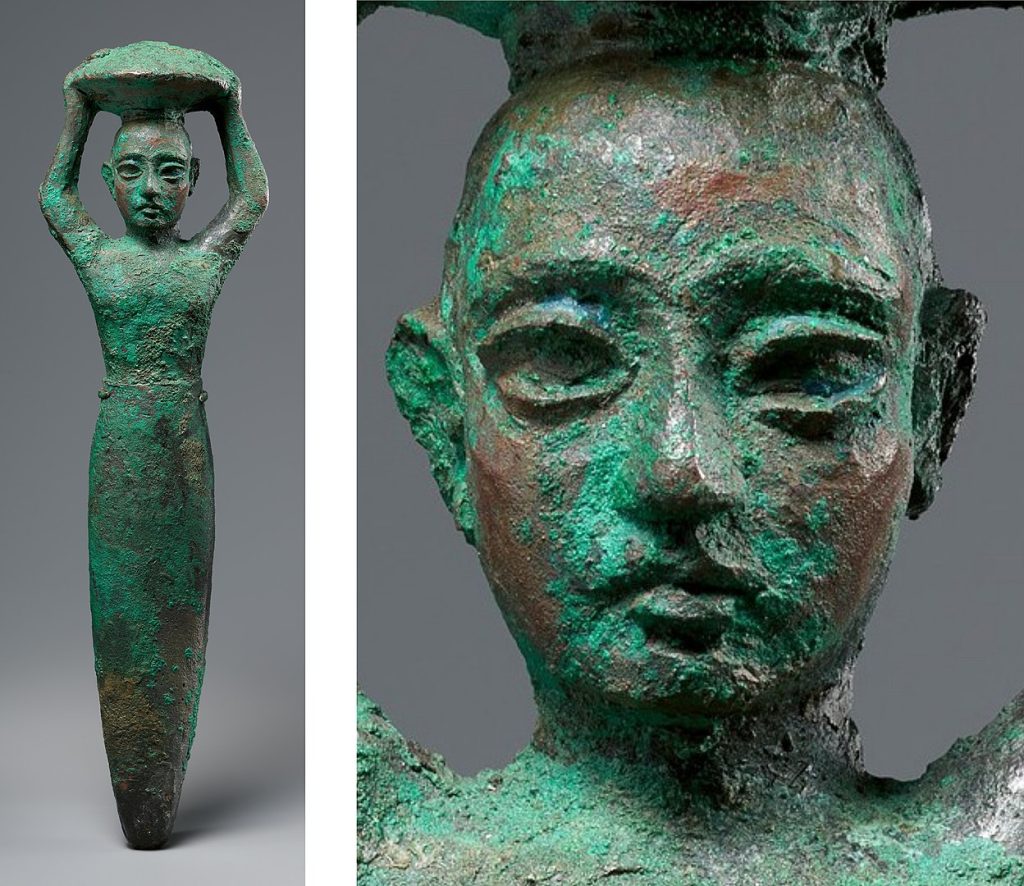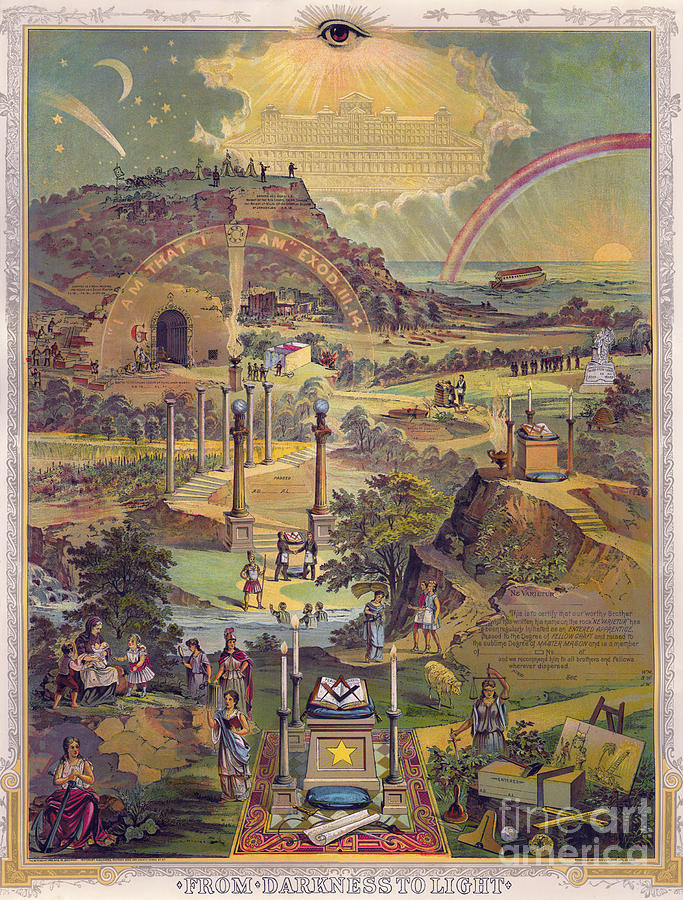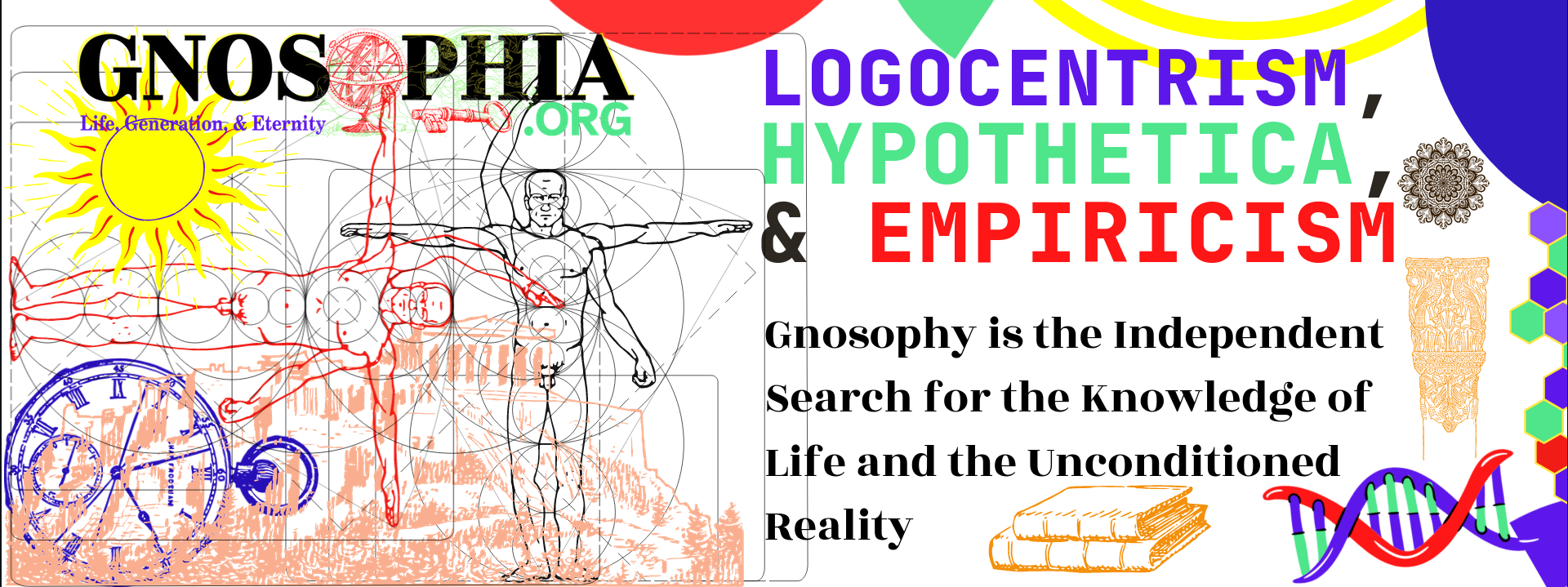Mysterious survivors of a traumatic cataclysm that destroyed their original homeland lived on to discover paradise but abandoned it so that they could create a new world – Our World. Of unknown origin, they were the first mathematicians, writers, doctors, astronomers, architects, humanists, geometers, and God-Builders who introduced time, architecture, epics, decimal notation, zodiac, bureaucracy, organized religion, apotheosis, and mass education. Their religion formed the basis of the Akkadian, Elamite, Hurrian, Assyrian, and Babylonian religions; as well as primordial Gnosticism which was based on materialism, theogenesis, deicide, and apotheosis. Also, their inventions and discoveries helped establish Canaanite religions, Stellar Theology, Mithraism, Zoroastrianism, Judaism, Christianity, Islam, and Greek Philosophy, particularly Pythagoreanism.
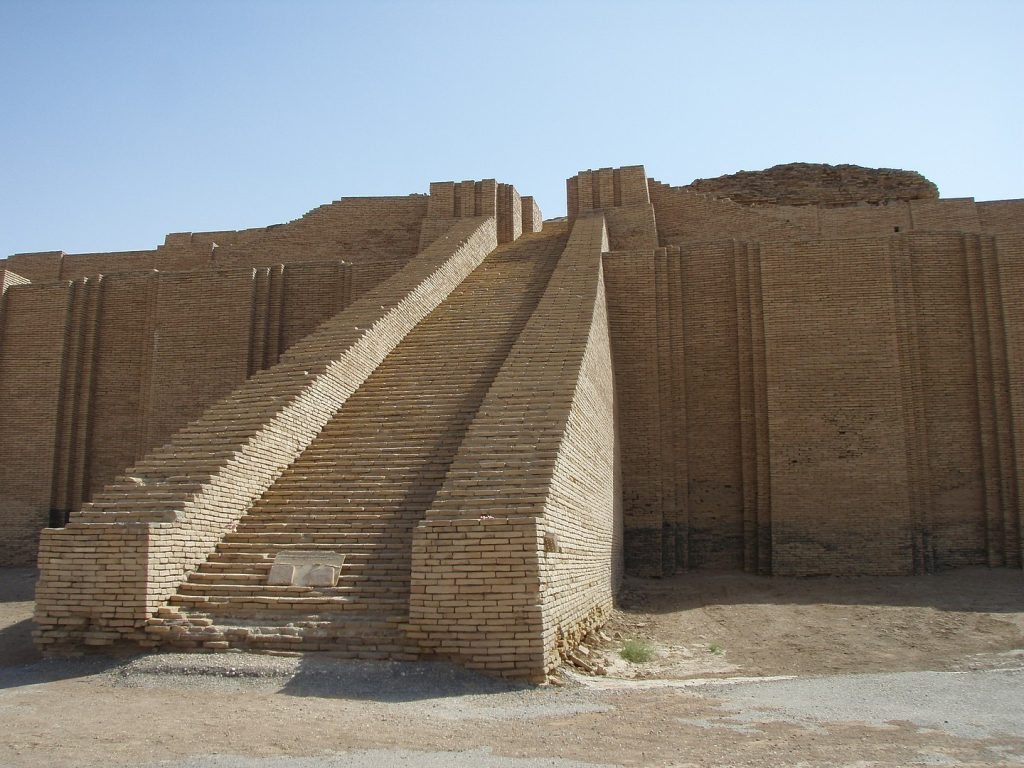
On June 9, 2014, Peter Pringle uploaded a video of a song he performed at the courtyard of the Palace of Nebuchadnezzar in Babylon (near modern al-Hillah in Iraq). The venue and the musical instrument used were chosen because they would help generate narrative immersion. The instrument used is called gish-gu-di. This is a long-neck, three-string lute that was used in 2100 BCE (Before Common Era) to play sacred songs. The psychological effect of being mentally drawn into the world where the song was first sung, i.e narrative immersion, was needed to make the audience appreciate the song and its meaning. So, what is special about this song?
Pringle was recreating a song that was first sung over 4000 years ago in an ancient non-Semitic, non-Indo-European civilization that had emerged in Mesopotamia about 1400 years earlier (circa 3500 BCE). By 2100 BCE, this civilization had achieved the greatest technological and cultural sophistication that humanity had ever attained (until then). Basically, this civilization marked the zenith of human civilization during the Bronze age, and continued to do so until its collapse at around 2004 BCE – under a wave of invasions by nomadic Semitic pillagers called the Martu. Despite this civilization collapsing when woolly mammoths still lived in Siberia, its brilliance was never matched by successor Semitic civilizations, including the Akkadian Kingdom of Larsa, the Old Babylonian Empire established by Akkadian-speaking Amorites, and the political federation established by the Semitic Kassites.
Likewise, the cultural splendor of this civilization was never attained by the Assyrian Empire nor the Neo-Babylonian Empire ruled by Chaldeans – a nomadic people who spoke a North-West Semitic language that is closely related to the language spoken by the Martu, the Suteans raiders, and the Aramean people who became prominent in the Neo-Assyrian Empire. Like Akkadian, the Assyrian language is an East Semitic language. This allowed Assyrians to easily use the first dictionary created by Akkadians to translate the tablets of the fallen non-Semitic civilization and the knowledge gained from this fallen civilization caused the Assyrian Empire to flourish more than the preceding Semitic empires.
Isaiah Berlin, quoting Giovanni Battista Vico, said that “what men have made, other men can understand”. For Pringle, the understanding of the song and how to play it were made simple by the fact that the musical composition was written on clay tablets alongside instructions on how to tune the gish gudi before playing this song. What was interesting to historians was the fact that instructions regarding how to tune the lute employed procedures based on the heptatonic and diatonic systems of musical scales. This revealed that these musical tones (as well as the octave) were understood by a civilization that existed long before the Greeks became a people at around 1750 BCE at the dawn of the Mycenaean civilization. It was initially thought that the Greeks were the first to invent the diatonic musical scales.
Third Dynasty of Ur
The song that Pringle recreated is today known as the Epic of Gilgamesh, and it was first sung during the Third Dynasty of Ur, circa 2100 BCE during the reign of Ur-Namma (or Ur-Nammu). He was also called Ur-Engur. Ur-Nammu called the lands that he ruled Ki-en-gi-Ki-u-ri to signify that he ruled two distinct lands with distinct populations. Ki-en-gi was the land of his non-Semitic people (and its center was Ur) and Ki-u-ri was the land of Akkadians (and it was centered in Akkad, and sometimes Kish). The Akkadians called these two lands Šumeri u Akkadi. When Alexander the Great conquered these two lands in 332 BCE, the Greeks combined the lands under a single designation – the land in the middle (mesos in Greek) of rivers (potamos in Old Greek), hence the name of Mesopotamia. So, we know that the land of Ur has been part of Mesopotamia.
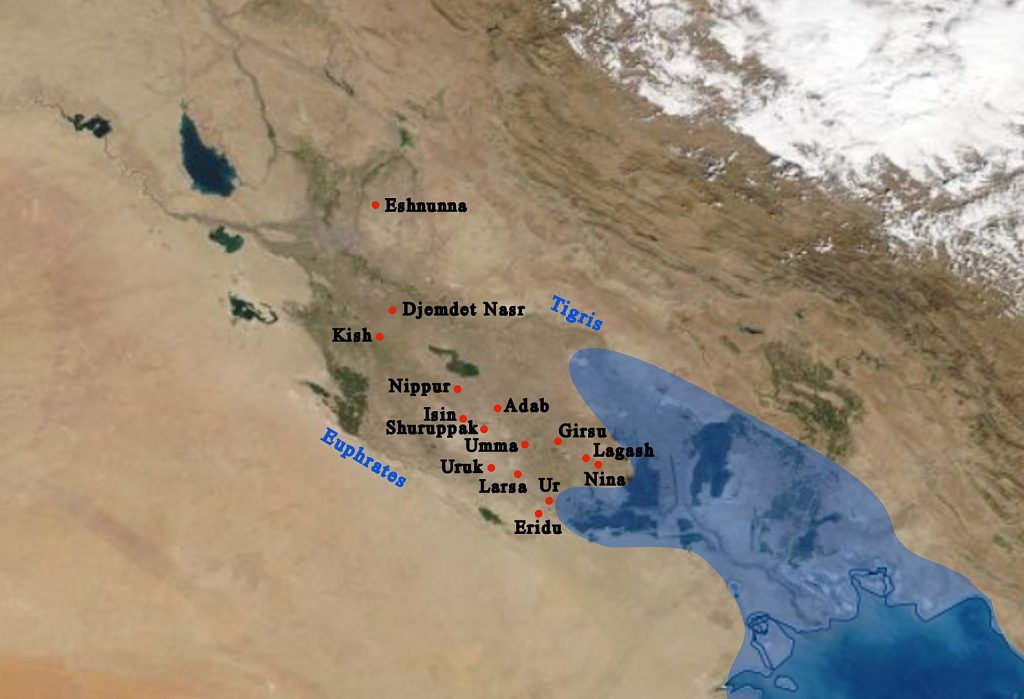
Also, we know that Ur is part of the land that the Akkadians called Šumeri. This is important because the non-Semitic people that Ur-Nammu belonged to would be named by 19th Century European historians after their land. For this reason, they first entered modern history books under the designation of Sumerians. These (non-Semitic) people never called themselves Sumerians, and neither did the Akkadians refer to them by that name.
The name that is given to a linguistic community (i.e people who speak the same language) by outsiders is called an exonym. If the exonym is a foreign word to the people being named, then it is called a xenonym. Therefore, Sumerian is a xenonym used to describe the non-Semitic linguistic community of Ur-Nammu and his people. So, what did the Sumerians call themselves? The name that a linguistic community gives itself is called the autonym, and it is used for self-designation and self-identification. Therefore, the question can be rephrased as: What was the autonym of the Sumerians? For now, I will use the xenonym Sumerians until I reveal their autonym later.
Who Established Ur?
In the region that later came to be called Mesopotamia, a succession of cultures developed before the Sumerians established the first civilization. Farmers had already settled in this region, and they had dug canals to divert the waters of the River Tigris and River Euphrates to their farms, thus establishing an irrigation system that the Sumerians would later improve on and make efficient for large-scale production of food so as to feed city dwellers.
The agricultural revolution started in 8000 BCE when humans discovered that they could domesticate animals and plants, and even perform a primitive form of genetic engineering through selective breeding so as to minimize objectionable attributes of plants and animals while promoting their favorable characteristics. Moreover, domesticated animals could be induced to reproduce beyond their reproduction rate in the wild. This revolution not only changed the genetic makeup of plants and animals, but it also transformed the landscape, thus revealing to the early farmers that they could change their physical environment as well as employ the forces in nature to work to their advantage.
These early farmers established the first settlements in the Levant and Anatolia. In these settlements, they practiced the earliest form of proto-religion which archaeologists now designate as the Cult of the Skull because they venerated human skulls of deceased people. They also buried their dead under the floors of their houses. This is notable because the Sumerians did bury their deceased adults under the floor of their houses while deceased babies were buried in walls (of their houses).
Farmers belonging to the Cult of the Skull settled in the region of Mesopotamia over 8000 years ago – around 7000 BCE – 6000 BCE. Contemporaneously, other farmers unrelated to the Cult of the Skull people also settled in this region. Together, these two groups of people established what archaeologists call the Samarra Culture which lasted until 5500 BCE, and the Halaf Culture which lasted until 5000 BCE. These cultures were succeeded by the Ubaid culture which lasted until 4000 BCE. Currently, we do not know the race or linguistic identities of the people of the Samarra, Halaf, and Ubaid cultures.
The first builders of the irrigation canals belong to the Ubaid culture, though some farmers of the Samarra culture had dug primitive canals. Nonetheless, it is the irrigation canals and pottery commerce of the Ubaid culture that allowed for human settlements to sprout across Mesopotamia. Concerning Ur, it is the people of the Ubaid culture who built Ur as a small settlement. The Sumerians arrived around 4150 BC and transformed Ur into a city-state.
The Black-Headed People
Sumerians literally introduced civilization into Mesopotamia by building the first city-states, with the first city-state being built in Eridu at around 3800 BCE. Civilization is derived from two Latin words: civis which means citizen, and civitas which means a city. The citizen who lives in a city is described as civilis which means civil (not civilian, which is currently the equivalent of a citizen). From these three Latin words, the French created the word civilisé in the 16th Century. Therefore, the birth of civilization is the birth of the city, and the first city in documented history has been dated to the Chalcolithic Age in Mesopotamia.

The establishment of the first city is associated with what archaeologists call the Uruk Phenomenon. This phenomenon describes the emergence of large human settlements that hosted tens of thousands of people in the region of Uruk starting from about 4000 BCE. The Uruk phenomenon is also called the Uruk period because it was dominated by the largest city ever seen until that time, the city of Uruk which covered about 400 hectares and had approximately 25,000 people by 3100 BCE. Uruk is an Akkadian word, and the original name of the city was Un-Ug. This city was the center of trade in the entire region, and it is commerce and the need for accounting that led to the development of the first writing script.
At around 3000 BCE, a new wave of Semitic migrants arrived in Uruk, and these Semitic migrants identified themselves as having come from the land that they called Akkad, and which the Sumerians called U-ri. These Semitic migrants are the Akkadians. The Akkadians called the region where Uruk is located, Shumeri, and they called the non-Semitic people they found there, Shalmat-Qaqqadi, which means black-headed people.
Monosyllabic Language Isolate
The Uruk phenomenon was created by a non-Semitic people speaking an agglutinative language isolate. These people are now known to have arrived in Mesopotamia from the south and first settled in Eridu before migrating north to the Uruk region.
The language that these non-Semitic people spoke could express an idea with only one syllable, for example, Ma meant Land, En meant Lord, Ki meant Earth or Land, Ur meant Dog, Lil meant Moving Air (i.e Wind), Si meant Settlement or City, Gi meant Reed (for writing) or Lu meant Man, and Gal meant Great. A language that permits an idea can be expressed using only one syllable is called a monosyllabic language.
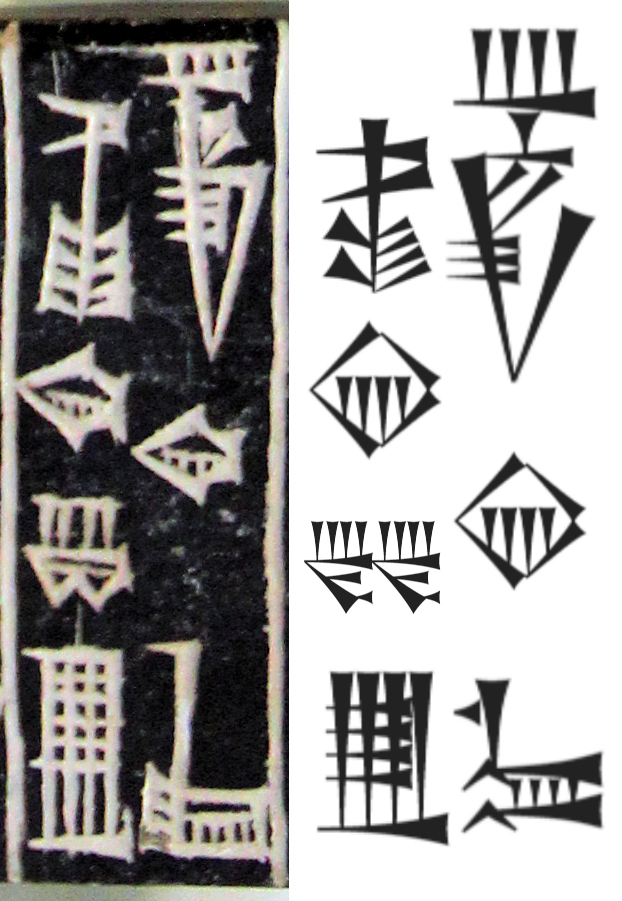
The individual syllables were combined (i.e agglutinated together) to create compound words, e.g En-Ki means Lord of Earth and this is the name that Sumerians gave to the God of Earth. Likewise, En-Lil means Lord of the Wind, and this is the name that Sumerians gave to the God of the Wind who separated Earth from the seven heavens. In like manner, En-Si means Lord of a City (or ruler of a city). Another example is Lu-Gal which means Great Man (which usually meant the leader of the En-Si or the King). So, we can now translate this cuneiform inscription that has been transliterated as lu-gal-ki-en-gi-ki-u-ri. The translation we get is as follows: Great Man (lu-gal) of Sumer (ki-en-gi) and Akkad (ki-u-ri), or simply King of Sumer and Akkad. This inscription was written on the seal of Shulgi, who we can confidently confirm that he recognized himself as the King of Sumer and Akkad.
Shulgi is the son of Ur-Nammu. Both father and son suffered from the same genetic disease, which modern neurology and ophthalmology would diagnose as unilateral congenital blepharoptosis. For Shulgi, this condition caused the left eyelid to droop over the sclera and cornea when the eye was opened and he looked directly in front of him (what in ophthalmology is described as the primary gaze). This is evident from the statue of King Shulgi. His father, Ur-Nammu, also had a droopy left eyelid, and thus the condition can now be qualified as hereditary unilateral congenital blepharoptosis. This condition is caused by the inability of an eye muscle known as the levator palpebrae superioris muscle to elevate (raise) the upper eyelid. This muscle is a voluntary skeletal muscle innervated by the somatic nervous system via the oculomotor nerve, which is part of the cranial nerve. Regarding Shulgi, I can confidently state that it is the dysfunction of this nerve that caused the muscle to be unable to contract hence resulting in a droopy eyelid. Therefore, Shulgi had a condition of neurological origin that caused paralysis of one of the extraocular muscles hence resulting in external ophthalmoplegia of the left eye.
Also, based on the provided cases of Shulgi and Ur-Nammu, it can be concluded that the condition is inherited through the Y-chromosome, and thus can be described as a form of sex-linked inherited ophthalmoplegia, which by deductive logic proves that mutations in genes in the Y-chromosome do cause some forms of congenital ophthalmoplegia. The droopy eyelid makes the face have an affect of disinterestedness or fatigue. This is why Shulgi appears with a downward-turned upper lip. Ur-Nammu and Shulgi deserve credit for allowing for the realistic representation of their faces (including their defects) on statues. However, their faces do not represent the average Sumerian affect. Sumerians were lively people who loved their dogs, pigs, bread, and beer. In fact, the first archeologically-proven tavern was unearthed in the Sumerian city of Lagash, and dated to about 2900BC. The average Sumerian lifestyle would not be too alien to the modern Western European or American, but it would be quite alien to modern Arabs and Orthodox Jews.
Sumerian Syllabogram as an Ideogram
Another notable fact about the Sumerians is how their language was quite different from the language that the people of the Ubaid culture spoke. The people of the Ubaid culture spoke a language that philologists have called the Banana language. The language was given this name because its words had the same three-syllable structure as the word banana e.g Igigi, Humbaba. Aruru, Inanna, Bunene, Kubaba, and Zababa. The Sumerian monosyllabic language is clearly quite different from this predominantly tri-syllabic Banana language. Nonetheless, both Akkadians and Sumerians borrowed words from the Banana language with the most famous borrowed word being Inanna, which Akkadians translated as Ishtar. Ishtar was revered as the Queen of Heaven in the Assyrian and Babylonian empires.
What makes the Sumerian language unique is the fact that a syllable could be represented using a single written symbol called a syllabogram. This explains why the Sumerians could invent a writing system based on syllabary, while Ancient Egyptians were stuck with using logograms in their hieroglyphic writing system until they developed the demotic script at around 700 BCE. (Syllabary is a set of syllabograms).
A syllabogram has the advantage that it indicates the sequence of sounds used to utter or pronounce it. This ordered sequence of sounds that vocalize a syllable is called a called phoneme. A logogram is a syllable represented using a picture. Therefore, it is not easy to decipher the phoneme of a logogram. The logogram is not the same as a pictogram. A pictogram is a picture that represents an idea, e.g computer icons are pictograms. Pictograms cannot be reduced to a single phoneme, while logograms are phonemes.
This means that we can easily approximate how Sumerians pronounced their words, but we cannot know how the Ancient Egyptians pronounced their words, which is why we do not know how to pronounce the word K-M-T, which is what pharaohs called their land (Egypt is a Greek word that means the Land of Ptah).
Additionally, the Sumerian script has the advantage that it contains vowels, unlike the Abjad script which does not contain vowels. The first abjad script was written using the Sumerian script and it was developed into the Ugaritic alphabet at around 1400 BCE. The Ugaritic alphabet is the basis of the Phoenician alphabet that was developed in 1050 BCE. The Paleo-Hebrew alphabet (or Old Hebrew alphabet) developed from the Phoenician alphabet at around 1000 BCE.
The Greek alphabet developed from the Phoenician alphabet at around 800 BCE. The Greek alphabet is the ancestor of the Latin Alphabet and the Cyrillic Alphabet. So, we can conclude that the Greek, Latin, Cyrillic, Hebrew, and Phoenician writing scripts are descendants of the Sumerian script.
It should be noted that Semitic people developed a vowel-less script from the vowelized script of the Sumerians. This removal of developed ideas by Semitic people would play a key role in the development of Semitic religions as almost all existing Semitic religions are derived from original non-Semitic religions that have been denuded of some rites and knowledge.
An ideogram is a graphic representation of an idea using a symbol. For example, the battery symbol on the screen of a smartphone is an ideogram that represents the battery that stores electrical charge in the device. What is brilliant about the Sumerian mind is that it was able to represent an idea as a single syllable that could be written down as a syllabogram. That is, the Sumerians are the first people to reduce an ideogram into a syllabogram. On the downside, this makes learning the Sumerian language hard, which in turn divided the Sumerian society into two groups: the illiterate people who could not read or write Sumerian syllabograms, and the literate people who included the scribes, poets, singers, and doctors.
The Semitic successors of the Sumerian civilization – e.g Akkadian, Babylonian, Assyrian, and Chaldean empires -cherished the Sumerian language and script as the literary and liturgical language of their empires. Sumerian syllabograms were used to write other languages e.g Elamite, Akkadian, Ugaritic, Babylonian, and Old Persian. When a Sumerian syllabogram is used to write another language (other than Sumerian), then it is called a Sumerogram. There the cuneiform script used by the Elamite, Akkadian, Ugaritic, Babylonian, Assyrian, and Persian people can accurately be described as the Sumerogram script.
Cuneiform Script and Mathematics
The Sumerian script is now called the cuneiform script and it was first written on wet clay tablets using a sharpened reed stylus. These clay tablets were then set to dry (usually to be sun-dried). When writing, this stylus created sharp edges on characters similar to serifs of chiseled Latin engravings. However, the edges of Sumerian characters had an angular wedge shape. In Latin, a wedge shape is called cuneus, and its plural is cunei. The Sumerian characters are named for their wedge-shaped edges as cuneiform characters. This in turn makes the Sumerian script the cuneiform script.
Is the cuneiform script the earliest script used for systematic writing? This script was created circa 3500 BCE. Doesn’t this make it younger than the Jiahu symbols? The answer is yes because the Jiahu symbols have been dated back to 6000 BCE. However, the Jiahu symbols, which are associated with the Peiligang culture of Henan, have not yet been confirmed as systematic writing. Credit for the first script used for systematic writing in Henan goes to the Oracle bone script that is dated to 1250-1200 BCE. The other candidate for being the first written script is found on the Tartaria tablets associated with the European Vinča-Turdaș culture. However, the authenticity of these tablets has not been confirmed, and they are considered to be forgery written using the Sumerian script. Relatedly, the first Egyptian logographic hieroglyph is dated to around 3200 BCE. This makes the cuneiform script the first writing system in the world. The last recorded Cuneiform text was written in 75 AD (Anno Domini, or 75 CE [Common Era] – in the first century of the Christian era).
Sumerians did not develop an alphabet so they did not develop Isopsephia. Isopsephia refers to the practice of assigning a numerical value to a letter of the alphabet so that a word written using this alphabet can be transformed into a numerical value. This numerical value is basically the sum of the values of the letters of this word. For example, Jesus in Greek is Ιησους. The letters in Ιησους add up to 888 which is the same value as the Greek words ὁ Θώθ (ho Thoth [the Egyptian God of Writing]) and λόγος ἐστί (transliterated as logos esti which means “he is the word”). Isopsephism is the practice of summing up the letters in a word so as to get the numerical value of the word. Isopsephism is the basis of Hebrew Gematria.
Sumerians did not develop Isopsephia, but they introduced mathematics into the world and they even developed what later came to be known as the Pythagorean theorem and algebra.
Consider the following mathematical problem (found written on an excavated damaged tablet) that a Sumerian teacher gave his/her pupil to solve:
“I found a stone but did not weigh it (missing text) When I added a second stone of half the weight, the total weight was 15 gin (what is the weight of the stone that I found)?”
Can you solve it?
This question proves that Sumerians already understood the concept of mathematical objects.
I got the above problem from Ian Stewart’s book, Taming the Infinite, on page 66 of the 2009 edition that I own. Stewart states that this question was written on Babylonian tablets, and this is wrong because gin is a unit of measurement of weight used by Sumerians, and its equivalent in Akkadian is šiqlu which is what children in the post-Sumerian Semitic civilizations used during classes.
In mathematics, there exist two basic types of reasoning: symbolic reasoning and visual reasoning; and the Sumerians developed both types of reasoning.
Symbolic reasoning is the basis of algebra where a letter represents an unknown numerical value that must be obtained using the logic of elemental mathematical operations. These elemental mathematical operations were developed by the Sumerians, and they are addition, subtraction, division, and multiplication. Working with numbers using the four basic operations of addition, subtraction, division, and multiplication is called arithmetic. This makes mathematics and arithmetic different because arithmetic is the most basic form of mathematics. Calculus can help explain this difference. Calculus is mathematics, but it is not arithmetic.
Visual reasoning is the basis of geometry and the Sumerians used geometry in the architecture and construction of their monumental ziggurats and temples. Ziggurat is the name that Akkadians gave to the large mastaba with a flat top on which a temple was built. This means that the ziggurat was the foundation of the Sumerian temple. Each Sumerian city-state had a ziggurat-temple complex that served as the center of communal worship and place of offering ritual sacrifice. The Sumerian temple also served as the tax collection point of the city, an idea that the later Hebrew Bible developed into the concept of the tithe. The Anu Ziggurat in Uruk has been dated to about 4000 BCE and the White Temple was built on it circa 3500 BCE. There are hints of the Second Temple of Jerusalem in this Ziggurat that was built about 6000 years ago.
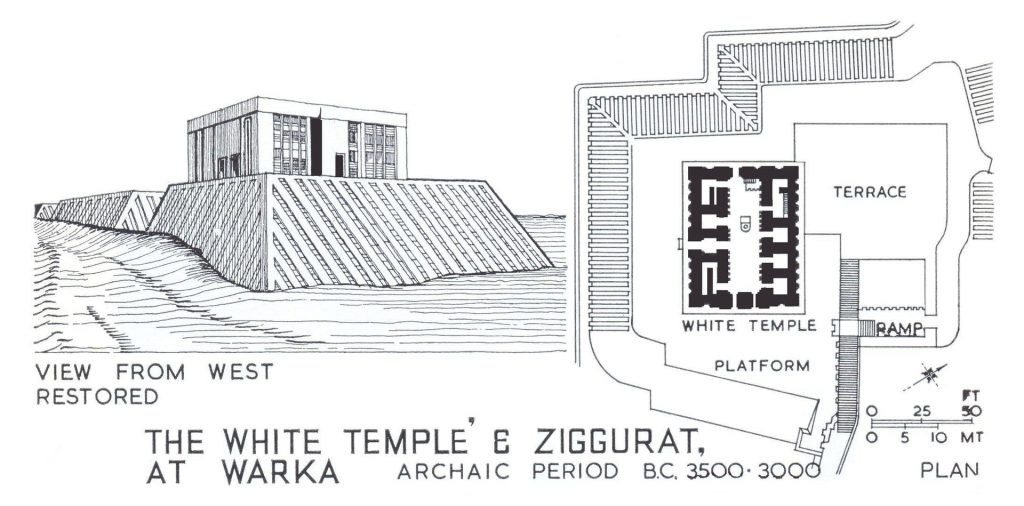

In The Sumerian World, I consider the question: Did the Sumerians invent or discover numbers? I also explain how the Minister of Finance of the Principality of Nassau, Simon Stevin, in 1585 CE used the Sumerian decimal notation to develop the base-10 number system that we use today. In other words, Sumerian numerical notation played a key role in the development of the modern decimal system of numbers.
Ug-sag-gi-ga and e-me-ku
In his Introduction to A History of the World (my copy was published in 2012 CE), Andrew Marr, states that history documents change and the change makers. Marr then argues that the changes that have happened were predestined to happen. He uses the example of James Watts, and argues that Watts could not have invented his steam engine a hundred years earlier. To drive the point home he states “if he (Watts) had not invented the separate condenser, somebody else would have done”. This implies that the separate condenser was predestined to be invented in 1765 – regardless of who the inventor would be – in order to cool the steam engine and in effect, improve the performance of the existing steam engine. For Marr, changes are predetermined to happen at a specific time. In the philosophy of history, this is called historical determinism.
On this website, I will explain that coincidences do not exist and therefore the idea of pure chance does not exist. As I explain in Chance and Destiny, chance in real life is not fully random but can best be described using a term borrowed from computer programming – pseudorandom. Based on the explanation provided in Synowl.com, pseudorandom means that the event that was thought to have happened by chance does have a cause that is not known. This means that the event is an effect of a cause, but the cause is not known i.e the cause is unknown. Therefore, if this unknown cause comes into reality again, then the event will happen again. This is the property of repeatability of pseudorandom events. In history, this property allows for the study of how previously unknown people came into existence, and why they came into existence at the time that they did. In Chance and Destiny, I explain that any event without a cause should be called a miracle. I also use symbolic logic to argue that no event can happen without a cause, and therefore miracles do not exist.
Regarding the Sumerians, they can be described as the original educators of humanity. To historians, Sumerians establish the temporal boundary between pre-history and early human history because they invented writing. Based on historical determinism, Sumerians emerged in history at the right time. Now, we can find out how the Sumerians described themselves.
What did the Sumerians call themselves? The people we now know as the Sumerians identified themselves as uĝ-saĝ-gi-ga which means black-headed people. This is an interesting way to identify themselves. Does it mean that the Sumerians once lived in a civilization where the black hair on their head made them distinct from other people in that civilization? Or, does the term black-headed signify nobility just like the ancient nobility in Tibet were called the black-headed people? If yes, this would mean that the term black-head signified a crown. For us who have the benefit of hindsight and history, we can crown the Sumerians as the intellectual fathers of humanity and founders of Western Civilization. It is interesting that graduands in modern universities wear a black headgear called the square academic cap during graduation ceremonies that confer degrees (to them). Some guesses have been made that black-headed means that the Sumerians were black people, but this is not true. The Sumerian phenotype as Sumerians themselves drew in their tablets and carved in statues (see the Statue of Gudea below) reveals that they were not black people.
Still, this autonym of ug-sag-giga would be the first mystery about the Sumerian people. It is not their Semitic and non-Semitic neighboring people who gave them that name, which means that the Sumerians already described themselves as such. In fact, the Sumerians described themselves as noble lords which is why they called their land ki-en-gir which means land (ki) of the noble (gir, which also means civilized natives) lords (en). In Old Persian, the Sumerian word Gir was translated as Ariya, which became the root of the Avestan word, Arya, and the Persian word Aryan. Therefore, the ki-en-gir can be translated as the land of the native (or original) noble Aryans. This means that the Sumerians could be considered the original Aryans (in an exonymic sense). It is interesting that the original exonymic Aryans were not Indo-European nor Semitic nor Turkic nor Turanian nor Black people.

The above description leads to a question: why did the Sumerians describe themselves collectively as a nobility? Were they a nobility in a past culture or polity that had disappeared? If so, where was this polity located and what name was the ug-sag-giga known by people in this polity?
It is interesting that to the Kannada Dravidians of South-West India, Saggiga means a god who resides in heaven.
The ug-sag-gi-ga called their language Emeku (e-me-ku, which means the language of [our] people). Emeku is an agglutinative language like Dravidian, Altaic, and Finno-Ugric languages. Sumerians divided Emeku into two dialects: Emegir which means native tongue, thus proving that Emeku is the language that they spoke before migrating to Mesopotamia; and Emesal which means the refined language. Emeku uses the ergative case, and is therefore an ergative language.
As a people with an ergative language, Sumerians divided all living things into two genders: the beings with consciousness (conscious beings) and the beings without consciousness (unconscious beings). Only human beings and the gods were conscious beings. The rest of all living beings were unconscious beings. This division was important to Sumerians because only conscious beings could be subjected to law, and they were the only beings that could be rewarded by going to heaven or be punished by going to the underworld which was called Kur.
Kur was the abode of a winged gigantic dragon called mus-hus (which means red fierce [or splendrous] snake) who fought with the creator of mankind, En-Ki. En-Ki was the father of mus-hus, which makes mus-hus immortal according to the Sumerians. En-Ki kicked mus-hus out of heaven and drove him into the underworld where the only food he could eat was dry dust. Compare this with Genesis 3:14 and Isaiah 65:25. During the reign of King Hammurabi (circa 1792-1750 BCE) of the Old Babylonian Empire, mus-hus became the sacred servant of the (God) Marduk. In the Seven Tablets of Creation, Enuma Elish – which has been dated to about 1200 BCE – mus-hus is described as the son of Tiamat.
In the Bible…
In Genesis 3:14, the Creator of Adam ha-Rishon (the first created man according to the Torah) punishes the serpent as thus: “You will crawl on your belly, and you will eat dust all the days of your life”. In Isaiah 65:25 after the God of the Hebrew Bible describes the new heaven and the new earth, he concludes by saying “The wolf and the lamb will feed together, and the lion will eat straw like the ox, and dust will be the serpent’s food”. What is interesting about this verse is that the idea that the wolf, lamb, lion, and ox would co-exist harmoniously in partnership is how the Sumerians described the paradise that they discovered and then abandoned.
To me, Isaiah 65 raises a question: what new Jerusalem is this God talking about? Is it the Jerusalem of Israel? Or, has this God renamed the City of the Temple of En-Ki (i.e Eridu) as the new Jerusalem? Most importantly, is the Book of Isaiah derived from Sumerian texts? If so, who is the messiah that Isaiah talks about? This also leads to another question: when was the Hebrew Bible first composed?
Current scholarly consensus is that the Hebrew Bible was first written around 600 BCE. This is based on the discovery of the oldest Biblical text written on scrolls and amulets that were excavated in 1979 in a cave at Ketef Hinnom. These artifacts were dated to that period. This dating means that these scrolls were contemporaneous with the Neo-Babylonian Empire. The Neo-Babylonian Empire was established by Chaldeans, and it enabled them to exercise dominion over the former ki-en-gir from around 626 BCE until 539 BCE. Hebrew, like Chaldean Aramaic, belongs to the North-West Semitic linguistic family and they share many words in common which endow these two languages with a high degree of mutual intelligibility. In fact, the Talmud and Sefer ha-Zohar (which is the central text of Kabbalah) are written in Aramaic, not Hebrew. So, how deep was the relationship between Jews and the Chaldeans?
According to Yosef Eisen in Miraculous Journey, the Chaldeans were not anti-Semitic, and they allowed Jews to establish their own communities. “Abraham was born in Babylon, so the Jews were not regarded as foreigners,” says Eisen in his aforementioned book. This affability between Jews and the Neo-Babylonians would have made it possible for Jews to obtain translated works of ancient Sumerian writings. Is it possible that these translated Sumerian writings provided part of the substratum of the Hebrew Bible? In Fallibility of Yahweh: How Academic Scholarship has Deconstructed Abrahamic Monotheism, I consider this issue as well as explain that the founder of Judaism is Ezekiel, and Judaism was created in Babylon (not Israel).
In Apotheosis and the Christ, I consider the issue of the Messiah and explain how the primordial (or pre-Gospel) Christians considered Jesus Christ to be an incarnation of a great Sumerian king who had undergone apotheosis and acquired greater powers than the God of the Torah. For this reason, these primordial Christians their Christ the Greater Yahweh. This means that primordial Christians understood Jesus Christ as a non-Jewish messiah who had become greater than the God of the Torah.
Where did the ug-sag-gi-ga come from?
What is mysterious about the ug-sag-gi-ga is that they were never interested in talking or writing about where they came from before settling in Eridu in Mesopotamia (circa 4150 BCE). The only exception they made was that they described their original homeland as having been flooded and “swallowed by the water” and they were the only survivors of this cataclysm. They also talked about discovering (the garden of) paradise but they had to abandon it and come establish ki-en-gir in Mesopotamia. This points to self-admission by Sumerians that they came from a foreign land and they could not return to it because it no longer existed. This raises another set of questions.
Were these survivors who became the Sumerians the cognitive elite of the collapsed society? If yes, was the collapsed society literate and did it have the knowledge and tools that the Sumerians introduced into Mesopotamia? If not, how did the Sumerians develop their writing system, and why did Sumerians have advanced skill sets (compared to the Ubaid culture) when they settled in Mesopotamia? On the other hand, if their submerged homeland was literate, was its society civilized (i.e did they have cities)? Did this society interact with other civilizations? Did this collapsed society establish its own civilization or was it part of a larger civilization? If it was part of civilization, did the Sumerians manage to recreate this civilization (and even exceed its brilliance)? Or, did the Sumerian and Neo-Sumerian (Third Dynasty of Ur) civilizations fail to attain the splendor of the lost civilization? These questions are also related to religion: Did the Sumerians introduce the religion of the collapsed civilization into Mesopotamia? This leads to questions related to the Hebrew Bible:
Did the authors of the Torah use the Sumerian description of their departure from their submerged homeland and search for a new home as the basis of the Exodus myth where a clerical elite (the Levites) led Israelites across the Red Sea to establish a new nation in a land occupied by other people? Also, what role did the Sumerian religious and wisdom texts play in the development of the Books of Isaiah, Daniel, and Ezekiel?
Sumerians invented the wheel circa 3500, and this allowed them to invent the chariot circa 2600 BCE. This chariot was pulled by wild donkeys (Sumerians never domesticated the horse nor the camel [which they called “wild bull from foreign mountains“]). This means that the Sumerians knew about the chariot, and their religion described a cosmic chariot of God pulled by great creatures. How is this Sumerian cosmic chariot related to Ezekiel’s “vision” in Ezekiel chapter 1? This vision of Ezekiel is the foundation of Maaseh Merkavah – which is foundational to Kabbalah. As I mentioned earlier, Ezekiel is the founder of Judaism. So, I can ask the question: Was Judaism created so as to transform Israelites (specifically Judaens [in Hebrew, Yehudit]) into the new Sumerians?

